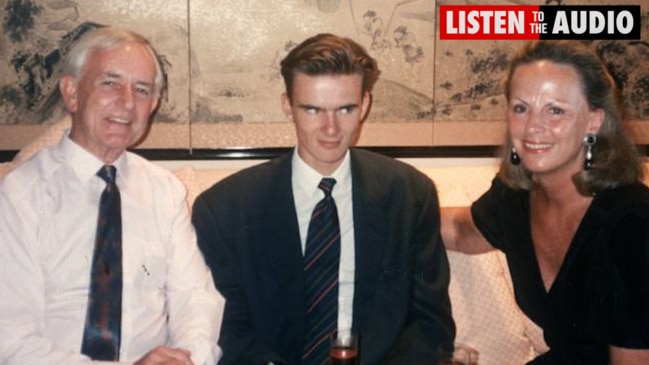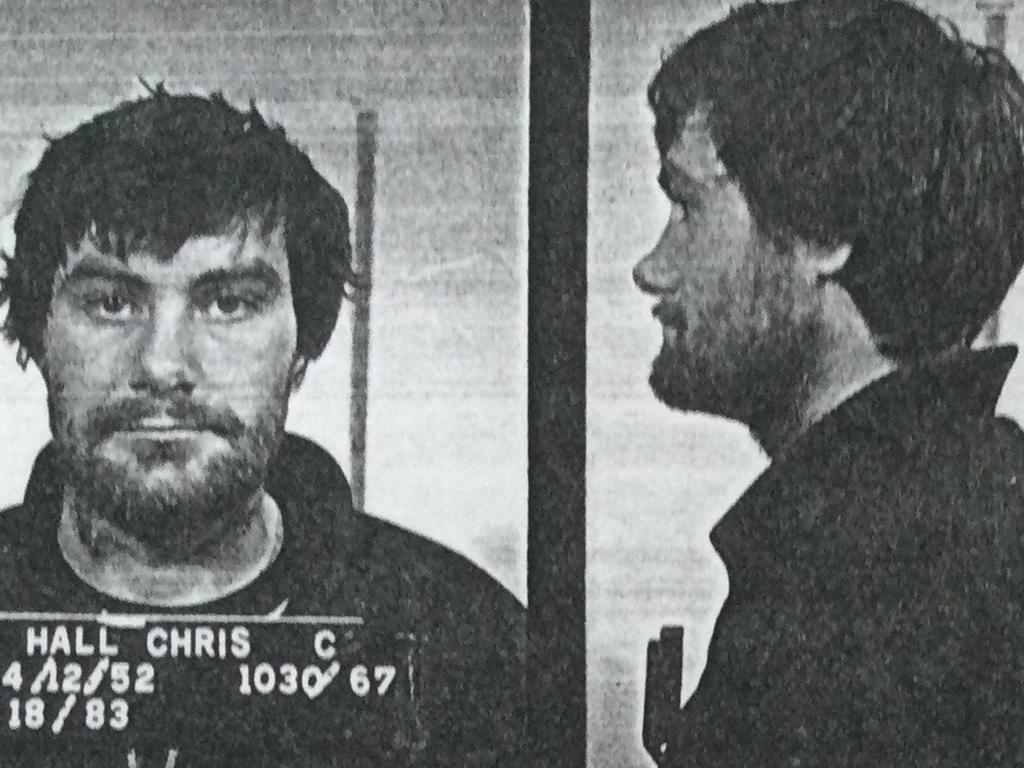Andrew Rule: How police finally nabbed the Ascot Vale rapist
It was a big day for crime news when serial self-mutilator Garry David died, sadistic sex offender Ian Melrose Pattison succumbed to cancer and the man dubbed “the Ascot Vale rapist” was finally arrested.

It was a big day for crime news.
Serial self-mutilator and would-be mass killer Garry David finally died in a security ward from bizarre self-inflicted wounds, such as slicing off his penis three times. Some pitied the tortured soul but few mourned him.
Sadistic sex offender and certified pond scum Ian Melrose Pattison died of cancer, not before time. Even palliative care nurses hated being near the dying creep.
And the man dubbed “the Ascot Vale rapist” was finally arrested after nine months of terrorising women across the northwestern suburbs.
It was June 11, 1993. Melbourne’s long night of fear and loathing was over. In daylight and handcuffs, the figure who’d caused such anguish and terror didn’t look like a monster. He’d shrunk back into a pathetic human.
He was an ordinary-looking 40-year-old man with an ordinary name.
Anyone looking for outward signs of the cruelty he displayed to the women he attacked might have glimpsed it in eyes that seemed as dead as a shark’s.

He stopped short of murder but extreme violence never seemed far away. He usually carried a knife during his string of sex assaults and often bound and sometimes gagged his victims.
His attacks were brutal and left women bruised or bleeding and, in one case, with a 72-year-old with broken ribs. He taunted his victims — and deliberately terrorised four of them by returning to attack them again. One of them four separate times.
His youngest known victim was 22, the oldest 82. One was eight months pregnant. Another had an eight-year-old daughter in the house who he threatened to harm if the mother resisted.
His willingness to attack old and young made him one of the most feared rapists in our history — and one of the most despised prison inmates of the last 30 years.
Like Raymond “Mr Stinky” Edmunds, he was an unidentified intruder who preyed on women home alone after studying their movements the way a crocodile watches and waits for prey.
Like “the silver gun rapist,” Peter Vaitos, he was a burglar who discovered rape — an opportunist who became addicted to terrorising defenceless women just as he’d become addicted to theft to feed his gambling addiction.
For months before his arrest, this increasingly bold predator caused fear and loathing among thousands of women in the northwestern suburbs where he struck most often.

Ascot Vale was just one suburb of many where he preyed on women living alone. But it was roughly the centre of a broad sweep extending from Carlton, where he lived in a lodging house, to Airport West, near where he had grown up in extreme poverty and abuse.
The spate of ugly home invasions that drew police and public attention to the unknown rapist apparently began in late 1992 and would continue until his arrest on June 11 the following year.
But forensic tests revealed that the same man was responsible for twice raping a middle-aged woman in Moonee Ponds more than five years earlier. It was a double attack that shocked police who thought themselves unshockable.
The woman, by then in her 50s, had been a nun most of her adult life before leaving her order. She was a virgin. On Remembrance Day, November 11, 1987, the rapist broke into her home in a quiet Moonee Ponds street.
He didn’t just ignore the former nun’s terrified protests. It was as if he enjoyed inflicting extra pain, physical and mental, to a Catholic authority figure. He specifically mocked her religion, asking why God didn’t save her.
He tied her up, took her bank card and forced her to tell him the security number so he could empty her account. He gagged her and went to get the cash, threatening to return and hurt her if the number was wrong.
He stole $300 using the card then returned and raped the poor woman again — a crime wrongly attributed for years to another unidentified sex offender, the child abductor dubbed “Mr Cruel”.

It wasn’t until early 1993 that a rash of rapes was alarming so many people that public meetings were held in northwestern suburbs. Det. Insp. Peter Harvey, acting head of the Rape Squad, called on local police to help saturate key areas with plain clothes police and cars.
They formed a task force, Operation Century, named after the rapist’s habit of ordering frightened victims to “count to a hundred” after he left them.
Many of the victims did not want to stay alone in their homes and went to stay with relatives or friends. Sometimes, an armed policewoman in casual clothes would move into a victim’s home and wait, acting as bait.
Meanwhile, officers in plain clothes wandered the streets, looking for a man who fitted the description most victims gave: in his late 20s or 30s, with dark hair and an Australian accent.
After four months and with public fear rising, the rapist was still at large. Late on the night of June 10, 1993, four task force members were near the Essendon tram terminus when they saw a man walk from a nearby street.
As soon as he saw them, he knew. He spun around and ran down the side street. Police chased on foot. One of them, Const. Lindsay Hansen, was almost run over as he pursued the fleeing man across Mt Alexander Rd before tackling him.
His name was Christopher Clarence Hall. He was interviewed, his address confirmed and then released in the early hours of the morning after providing a blood sample. His criminal record stretched back to his childhood — but it was for burglary and theft, not sex crimes.

Around noon that day, police went to Hall’s rooming house in Cardigan St, Carlton and searched his empty room, finding incriminating items, including a pair of runners identical to those the rapist had worn at a crime scene three weeks earlier.
Then an alert policewoman, Jacqueline Curran, saw a man matching Hall’s description in a nearby street. She arrested him.
In Hall’s pocket was a one-way bus ticket to Katherine in the Northern Territory. If the police had waited a few more hours, he would have been on his way to the far north, where so many wanted men had vanished. Once there, he might have done the same. But he had left his run too late.
Hall faced the County Court in May 1994. He was represented by respected criminal lawyer Brendan Wilkinson, who lived in the Essendon area and knew the score.
Wilkinson had seen a lot of bad endings, especially for those with bad starts in life. Hall’s life of crime had started in 1965, when he was 12.
Hall was a loner who was socially and sexually dysfunctional, one of a dozen children born to a violent alcoholic father and a frightened mother trapped by poverty to a life of family violence.
His origin raises the question of whether he was born bad or made that way. Nature or nurture?
Police noted that most of Hall’s siblings had not been in trouble with the law, and that his mother was the only one in the family to support him during his trial.

A troubled child at school, he had been sent “away” to institutions such as the notorious St Augustine’s Orphanage, run by the Christian Brothers at Geelong, and the Morning Star home run by Franciscan monks at Mornington.
Both institutions would later be shut down after the exposure of systematic sexual and physical abuse that produced a generation of ultra-violent offenders. Garry David was one of dozens. Hit man Chris “Rentakill” Flannery was another.
Judge Glen Waldron tried Hall for 19 counts of rape, two of attempted rape and six counts of causing serious injury and threats to kill and injure. He was also charged with a total of 18 burglary and theft offences.
With his lawyer’s agreement, Hall pleaded guilty rather than subjecting his traumatised victims to cross-examination about the worst hour of their lives. He was meek in court, intimidated by the presence of some of those he had hurt so grossly, who came to see justice done.
A psychiatrist stated that Hall did not suffer a mental illness. He wasn’t normal but knew what he was doing.
Judge Waldron sentenced him to 34 years with a minimum of 27. Longer than most murder sentences but, in the eyes of many, well deserved.
The judge said Hall had subjected the women “to a humiliating, repulsive as well as terrifying experience,” an evil that “constituted the high-water mark of anti-social behaviour.”
An appeal court did not quite agree, reducing the sentence to 29 years with a minimum of 25.

But Jacqueline Curran, the detective who had arrested Hall in Carlton before he could flee the state, knew he must have attacked other women.
She interviewed Hall in prison several times until he revealed other rapes. In 1997 he was charged with four more attacks. The extra convictions pushed his sentence to 32 years with 27 minimum.
If Hall had received full remissions for good behaviour he would have been released in 2020. Even if he serves all of his sentence he will be due for release from the John Hopkins facility at Ararat next year. Maybe sooner.
Whether he will be let back on the street or be required to live in the “village of the damned” community for sexual deviates at Ararat is hard to say.
Judge Waldron had no doubt about Hall’s potential to reoffend. “Even in comparative old age there is a real risk that you would offend again,” he told Hall when he sentenced him.
Lawyer Brendan Wilkinson recalls Hall as a pathetic figure, hated as much in prison as on the outside. He also recalls his grateful client, who had no money, making him a coffee mug in the prison workshop as a gift.
Wilkinson used the mug for years at work. But when the time came to clean out his office, his wife told him not to bring it home.
Originally published as Andrew Rule: How police finally nabbed the Ascot Vale rapist




